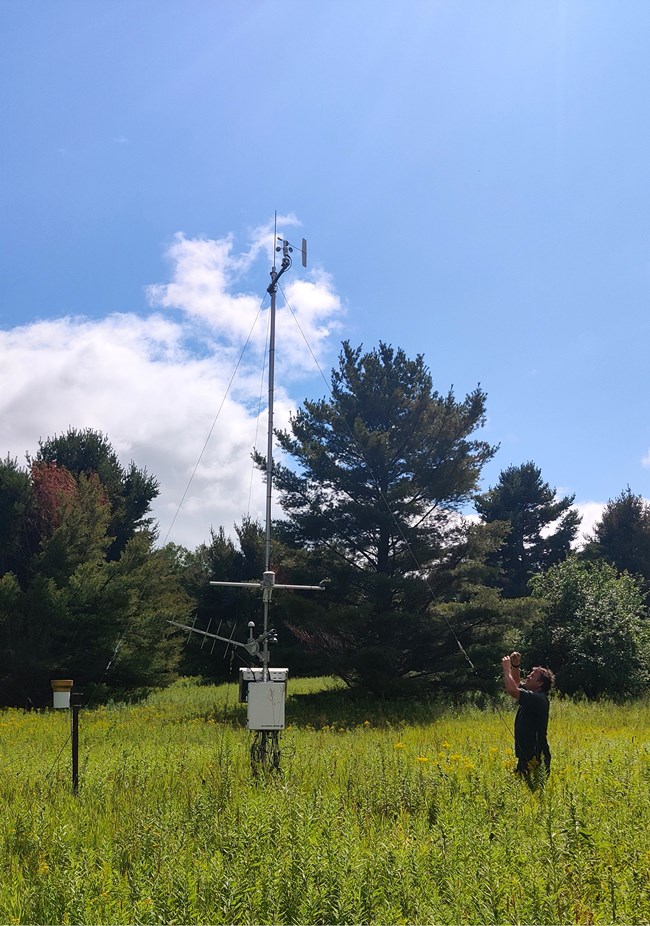
NPS
Real-time weather observations are essential for safety officers and resource managers to understand how conditions at their park may be affecting visitor safety, fire risk, air quality, drought, phenology, or any number of other factors.
Long-term Monitoring
We maintain and monitor several Remote Automatic Weather Stations (RAWS) strategically located to address gaps in lake-affected and island locations at Great Lakes parks. These RAWS units collect observations of air temperature, precipitation, snow depth, solar radiation, barometric pressure, and forest fuel conditions and send them via satellite to the National Interagency Fire Center. Our data are incorporated into the Weather Information Management System—including the National Fire Danger Rating System—and the Wildland Fire Application Information Portal (wildfire.gov), among other places.
NPS Climate Change Response Program (CCRP)
In addition to our long-term monitoring work, the NPS CCRP provides training and dozens of resources for understanding how a changing climate affects parks. Explore their website at Climate Change (U.S. National Park Service) (nps.gov)Last updated: July 2, 2025
